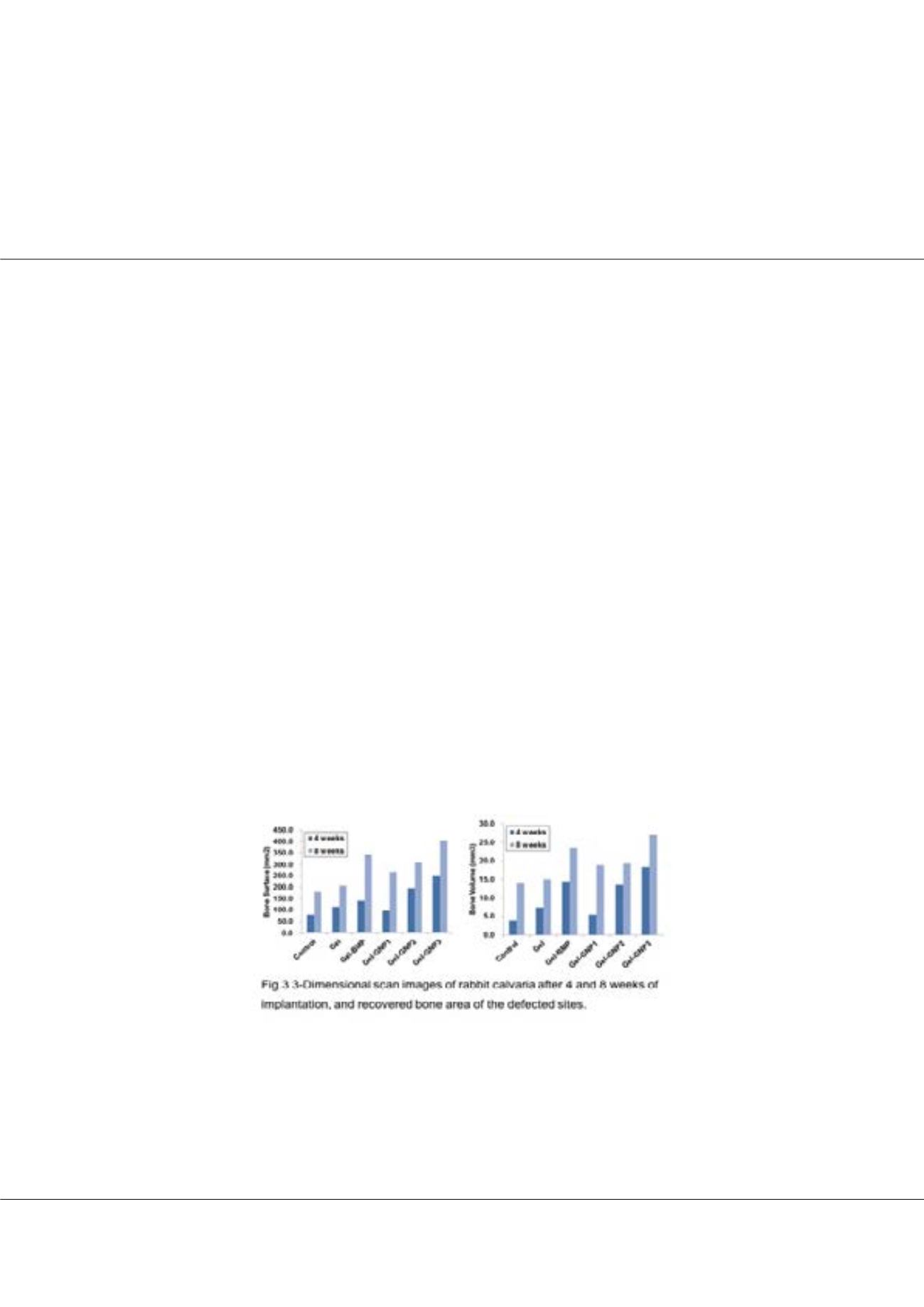

Page 78
conferenceseries
.com
RRJOMS | Volume 5 | Issue 4 | July, 2017
July 27-29, 2017 Vancouver, Canada
10
th
International Conference on
Emerging Materials and Nanotechnology
Bone regeneration enhanced by using a gold nanoparticle–hydrogel complex
Deok-Won Lee
1
and
Sung ok Hong
2
1
Kyung Hee University, South Korea
2
Catholic Kwandong University, South Korea
Introduction:
Gold nanoparticles (GNPs) are widely used in diagnostics, drug delivery, biomedical imaging and photothermal
therapy due to their surface plasmon resonance, fluorescence, and easy-surface functionalization. According to recent studies,
GNPs display a positive effect on the osteogenic differentiation of mesenchymal stem cells (MSCs) and MC3T3-E1 osteoblast-
like cells. The aim of this study was to develop a new approach for bone tissue regeneration based on the utilization of a
biodegradable hydrogel loaded with GNPs.
Methods & Materials:
We used photo-curable gelatin hydrogels (Gel) to provide a proof of principle of GNPs in regeneration
strategies for bone tissue repair. We investigated the effects of these Gel–GNP composite hydrogels both
in-vitro
and
in- vivo
.
The hybrid hydrogel was formed by irradiating a mixture of a photo-initiator, methacrylated gelatin (GelMA) and GNPs with
ultraviolet (UV) light. The content and distribution of GNPs in the GelMA solution and hydrogel were determined by UV-
Vis spectroscopy, differential scanning calorimetry (DSC) and thermo-gravimetric analysis (TGA). The GNPs embedded in
a gelatin hydrogel were evaluated for their capacity to induce osteogenic differentiation of human adipose-derived stem cells
(ADSCs).
Results:
The
in-vitro
results showed that the hydrogels loaded with GNPs promote proliferation, differentiation and alkaline
phosphate (ALP) activities of human adipose-derived stem cells (ADSCs) as they differentiate towards osteoblast cells in a
dose-dependent manner. Moreover, the in-vivo results showed that these hydrogels loaded with high concentrations of GNPs
had a significant influence on new bone formation.
Conclusion:
The Gel–GNP displayed significantly higher new bone formation in animal tests. Through these
in-vitro
and
in-
vivo
tests, we found that the Gel–GNP can be a useful material for bone tissue engineering.
This study was supported by a grant from the National Research Foundation of Korea (NRF-2014R1A1A1002630 and NRF-
2016R1A2B4014600)
Biography
Deok-Won Lee is an Oral and Maxillofacial Surgery Specialist and Associate Professor of Kyung Hee University College of Dentistry. His expertise is in treating
and improving the oral and maxillofacial health and wellbeing of people. His research on dental implant materials creates new pathways for improving healthcare.
He is continually building and investigating on adequate material for implantation through in-vivo and in-vitro models based on years of experience in research,
evaluation, teaching and administration both in hospital and education institutions.
verycutebear@hanmail.netDeok-Won Lee et al., Res. Rev. J Mat. Sci. 2017
DOI: 10.4172/2321-6212-C1-003
















